
How to Use Protection board for battery 30v 4a: Examples, Pinouts, and Specs
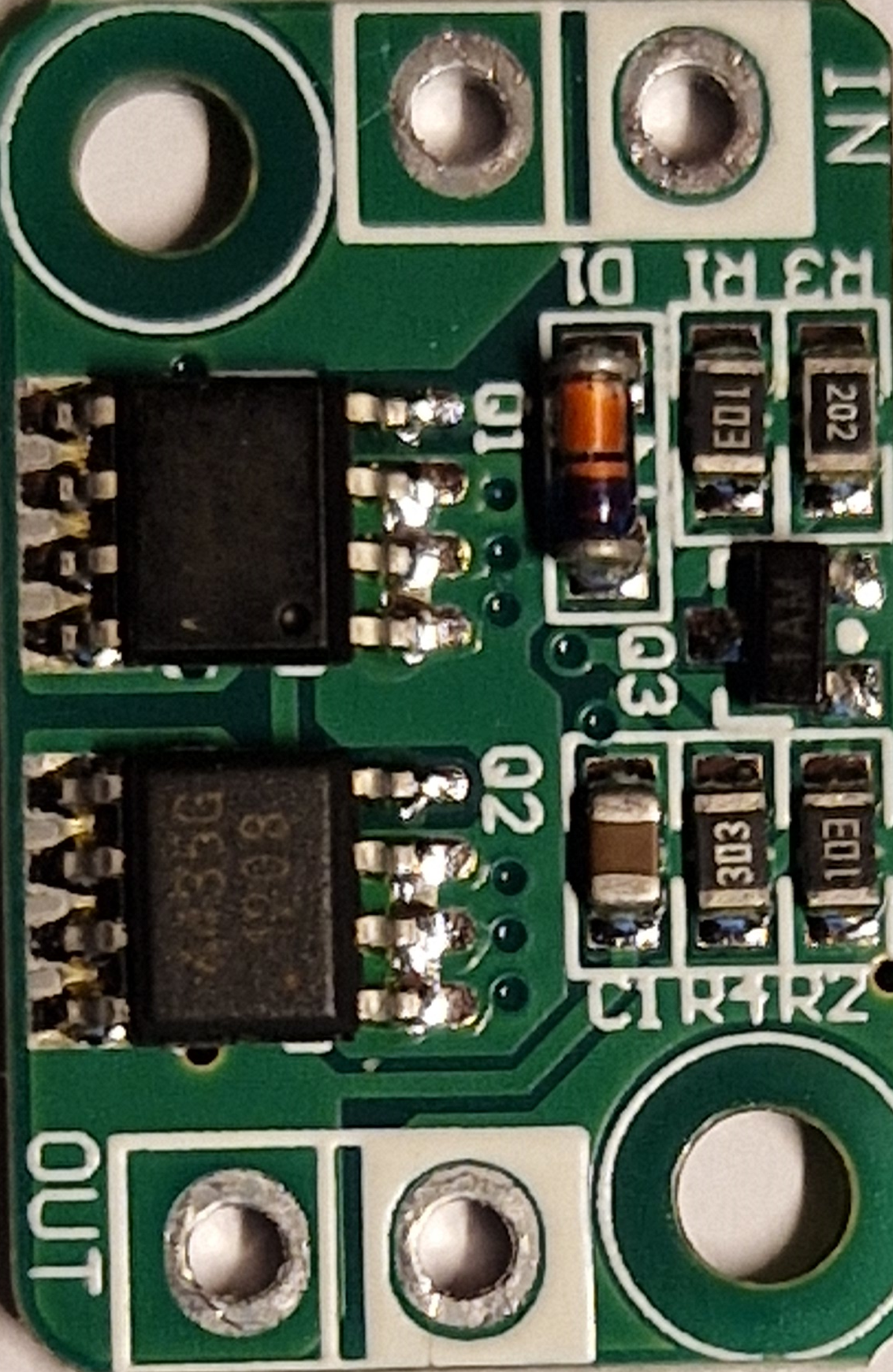
 Design with Protection board for battery 30v 4a in Cirkit Designer
Design with Protection board for battery 30v 4a in Cirkit DesignerIntroduction
The Protection Board for Battery 30V 4A (Manufacturer: CN, Part ID: 4A-FJB) is a crucial component designed to safeguard batteries from potential damage. This protection board ensures the longevity and safety of batteries by preventing overcharging, over-discharging, and short circuits. It is commonly used in various applications, including:
- Portable Electronics: Ensuring the safety of rechargeable batteries in devices like smartphones, tablets, and laptops.
- Electric Vehicles: Protecting battery packs in electric bikes, scooters, and cars.
- Renewable Energy Systems: Safeguarding batteries in solar and wind energy storage systems.
- DIY Projects: Providing battery protection in custom electronics projects, often interfaced with microcontrollers like Arduino.
Explore Projects Built with Protection board for battery 30v 4a
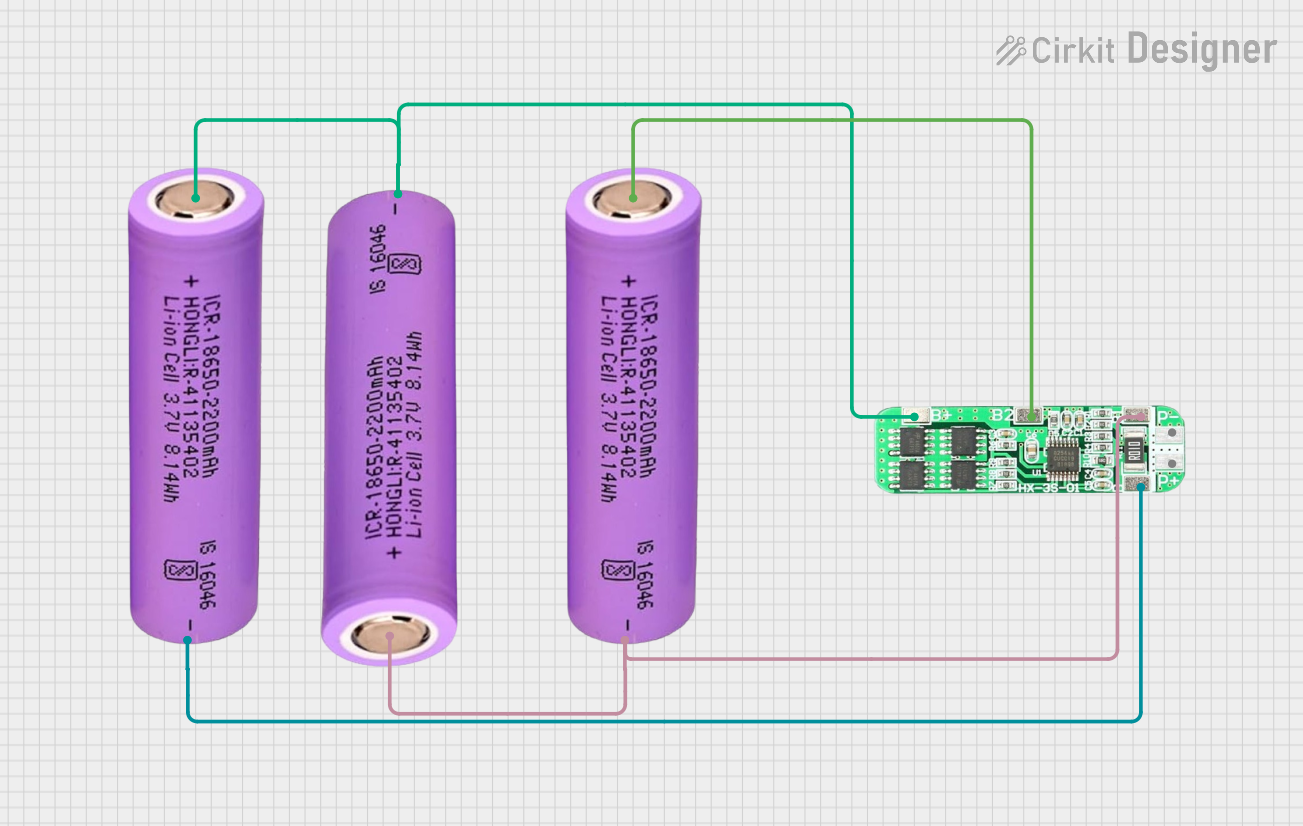
 Open Project in Cirkit Designer
Open Project in Cirkit Designer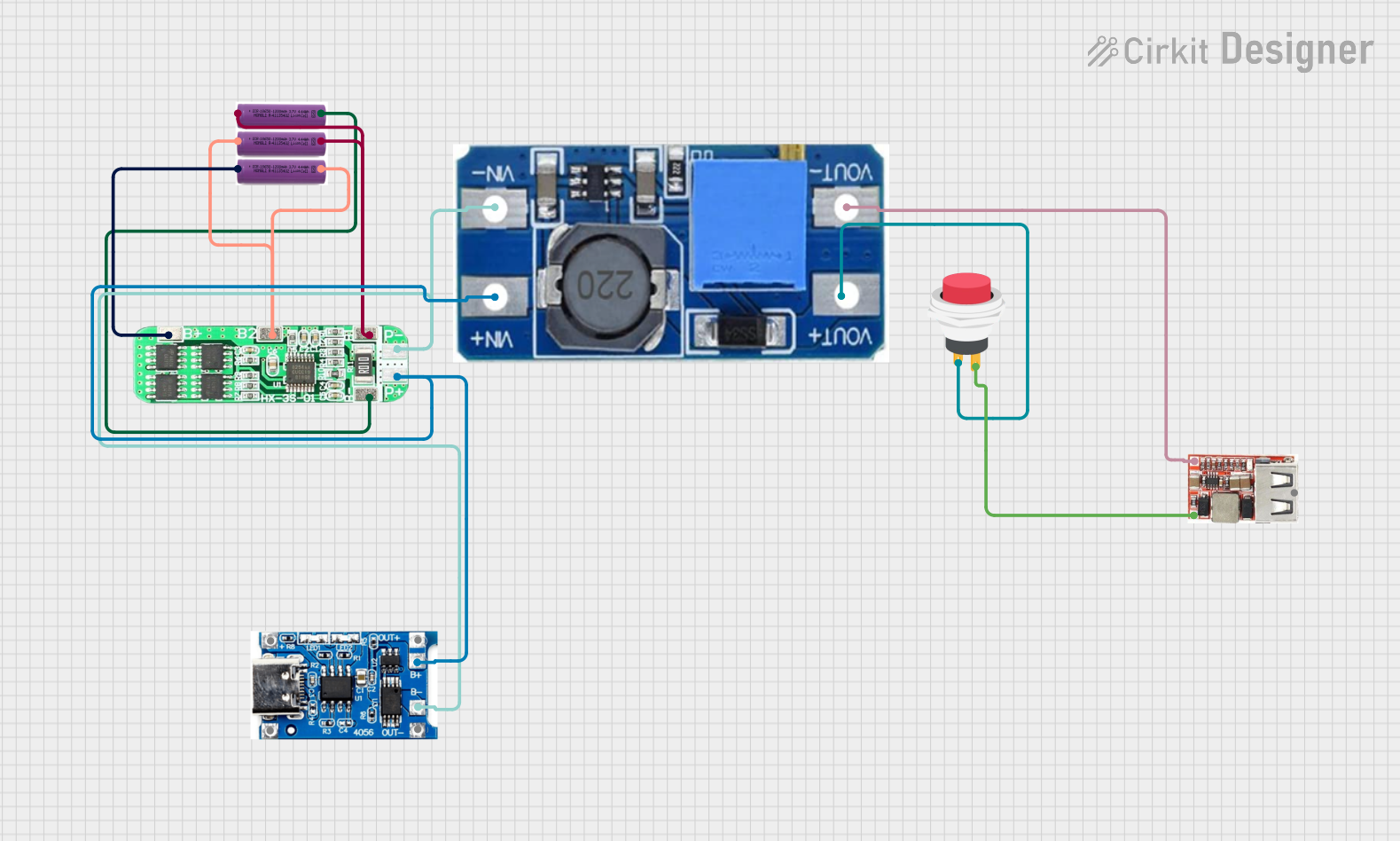
 Open Project in Cirkit Designer
Open Project in Cirkit Designer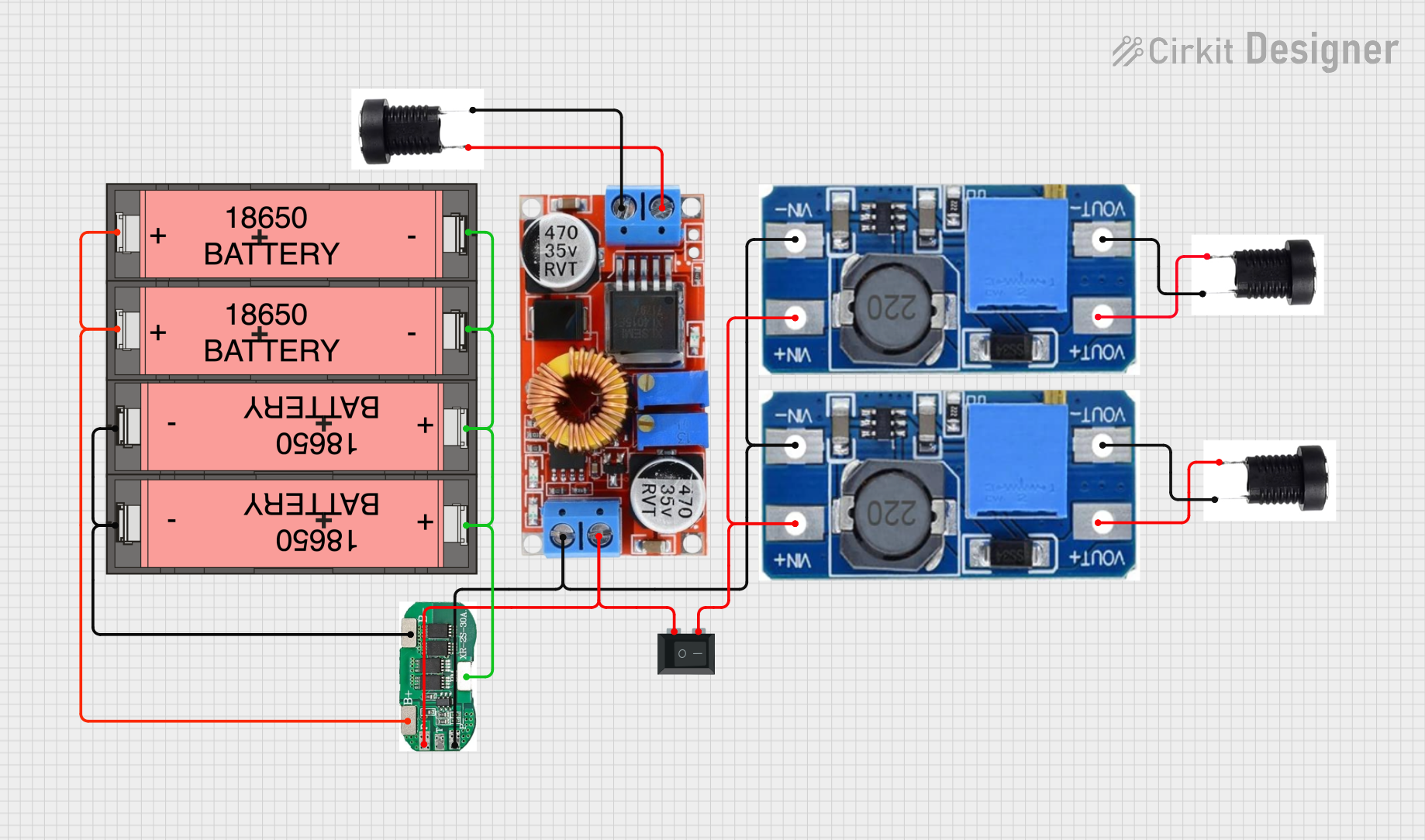
 Open Project in Cirkit Designer
Open Project in Cirkit Designer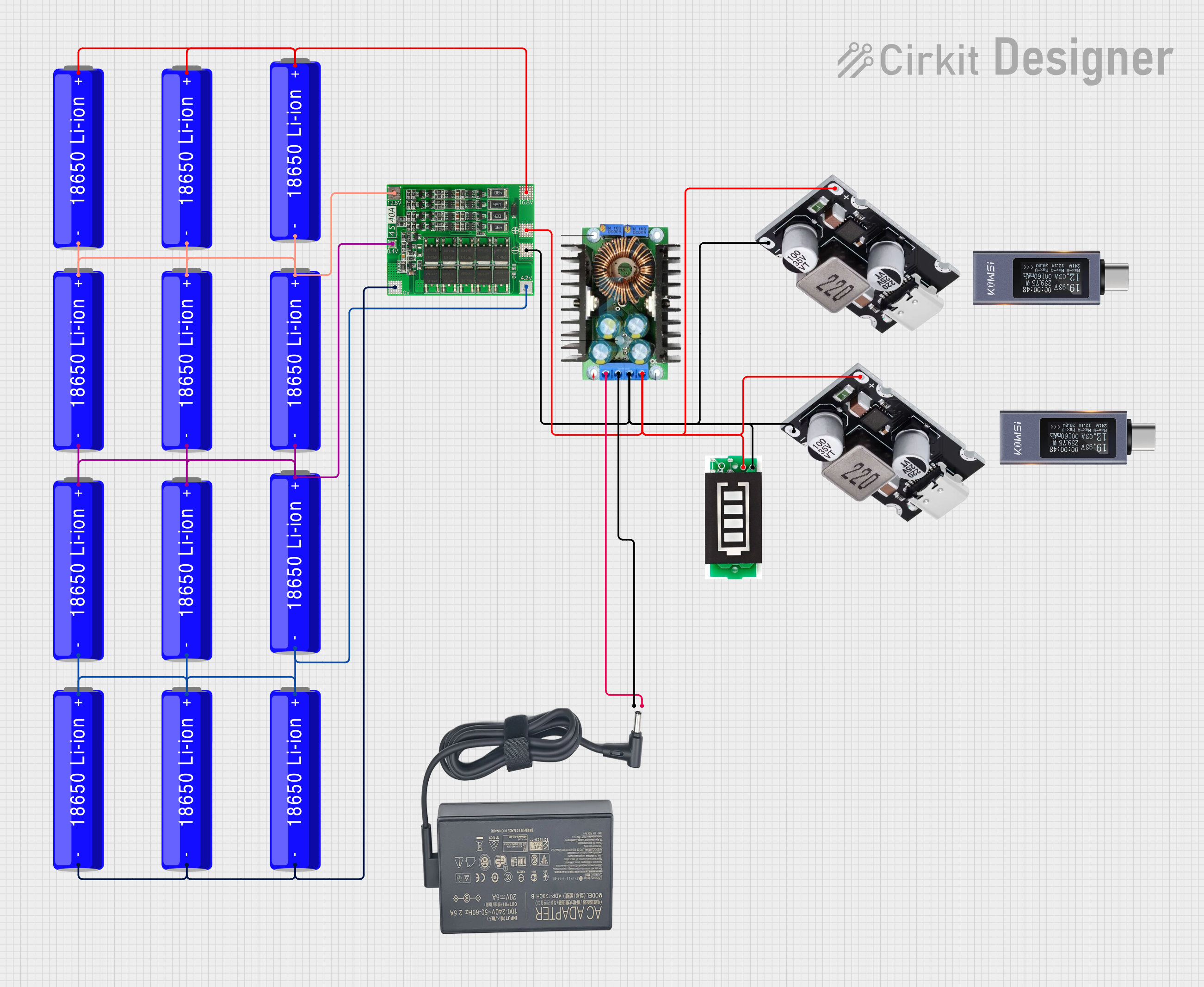
 Open Project in Cirkit Designer
Open Project in Cirkit DesignerExplore Projects Built with Protection board for battery 30v 4a

 Open Project in Cirkit Designer
Open Project in Cirkit Designer
 Open Project in Cirkit Designer
Open Project in Cirkit Designer
 Open Project in Cirkit Designer
Open Project in Cirkit Designer
 Open Project in Cirkit Designer
Open Project in Cirkit DesignerTechnical Specifications
Key Technical Details
| Parameter | Value |
|---|---|
| Maximum Voltage | 30V |
| Maximum Current | 4A |
| Overcharge Voltage | 4.25V ± 0.05V per cell |
| Over-discharge Voltage | 2.5V ± 0.1V per cell |
| Short Circuit Protection | Yes |
| Operating Temperature | -20°C to 60°C |
Pin Configuration and Descriptions
| Pin Number | Pin Name | Description |
|---|---|---|
| 1 | B+ | Battery positive terminal |
| 2 | B- | Battery negative terminal |
| 3 | P+ | Load/Charger positive terminal |
| 4 | P- | Load/Charger negative terminal |
Usage Instructions
How to Use the Component in a Circuit
Connection to Battery:
- Connect the B+ pin to the positive terminal of the battery.
- Connect the B- pin to the negative terminal of the battery.
Connection to Load/Charger:
- Connect the P+ pin to the positive terminal of the load or charger.
- Connect the P- pin to the negative terminal of the load or charger.
Important Considerations and Best Practices
- Ensure Correct Polarity: Always double-check the polarity of the connections to avoid damaging the protection board or the battery.
- Avoid Exceeding Ratings: Do not exceed the maximum voltage (30V) and current (4A) ratings to ensure safe operation.
- Secure Connections: Ensure all connections are secure and insulated to prevent short circuits.
- Monitor Temperature: Operate the protection board within the specified temperature range (-20°C to 60°C) to maintain optimal performance.
Troubleshooting and FAQs
Common Issues and Solutions
Issue: The battery is not charging.
- Solution: Check the connections to ensure they are secure and correctly polarized. Verify that the charger is functioning properly and providing the correct voltage and current.
Issue: The load is not receiving power.
- Solution: Ensure that the battery is charged and the connections to the load are secure. Check for any signs of short circuits or over-discharge protection being triggered.
Issue: The protection board is overheating.
- Solution: Verify that the current drawn by the load does not exceed 4A. Ensure proper ventilation and avoid operating the board in high-temperature environments.
FAQs
Q: Can this protection board be used with an Arduino project?
- A: Yes, this protection board can be used to safeguard batteries in Arduino projects. Ensure that the battery voltage and current requirements are within the board's specifications.
Q: How do I know if the protection board is working correctly?
- A: The protection board will automatically prevent overcharging, over-discharging, and short circuits. You can monitor the battery voltage and current to ensure they are within safe limits.
Q: Can I use this protection board with multiple batteries in series?
- A: This protection board is designed for single-cell or parallel battery configurations. For series configurations, use a protection board designed for multi-cell batteries.
Example Code for Arduino Integration
Here is an example code snippet to monitor the battery voltage using an Arduino UNO:
const int batteryPin = A0; // Analog pin connected to battery
float batteryVoltage = 0.0;
void setup() {
Serial.begin(9600); // Initialize serial communication
}
void loop() {
int sensorValue = analogRead(batteryPin); // Read the analog value
batteryVoltage = sensorValue * (5.0 / 1023.0) * 6; // Convert to voltage
// Assuming a voltage divider with a ratio of 1:6
Serial.print("Battery Voltage: ");
Serial.print(batteryVoltage);
Serial.println(" V");
delay(1000); // Wait for 1 second before next reading
}
This code reads the battery voltage through an analog pin and prints it to the serial monitor. Adjust the voltage divider ratio as needed based on your specific circuit.
By following this documentation, users can effectively utilize the Protection Board for Battery 30V 4A in their projects, ensuring the safety and longevity of their batteries.